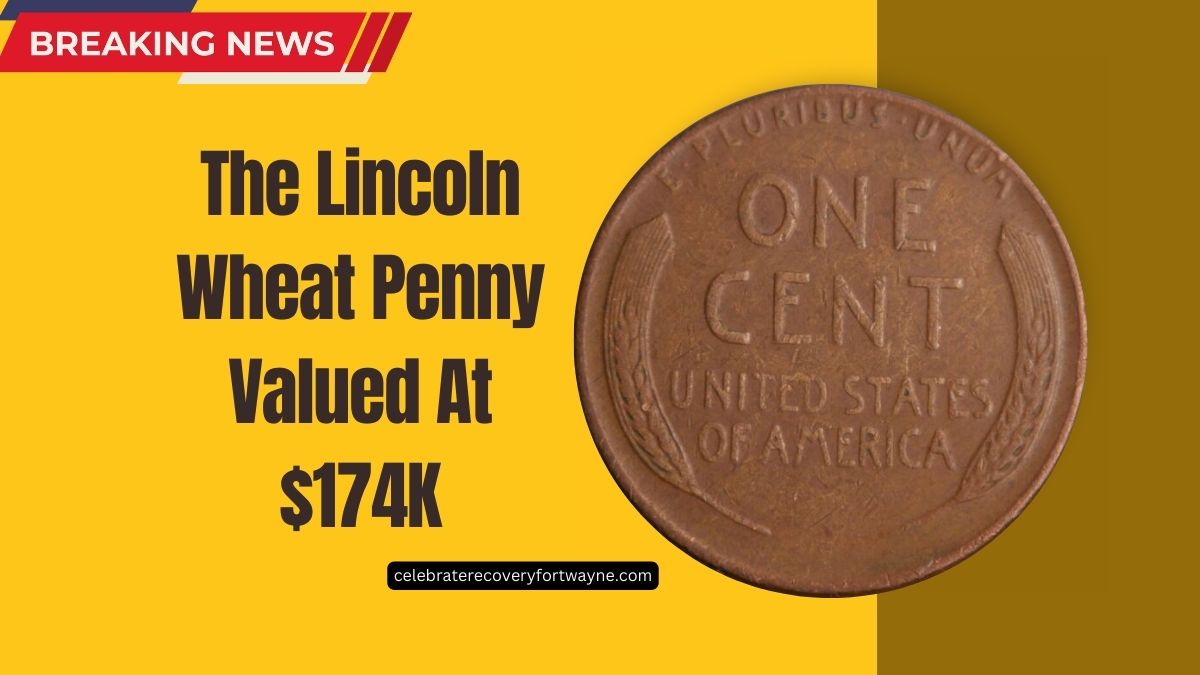Have you ever wondered if the old penny in your pocket might be worth more than just a few cents? The Lincoln Wheat Penny is one of those coins that has transformed from an everyday item into a rare numismatic treasure, with some of them being valued at an incredible $174,000 or more.
This article will take you through the fascinating world of the Lincoln Wheat Penny, how it became so valuable, and guide you on how to spot these rare coins if you happen to come across them in circulation.
The Birth of the Lincoln Wheat Penny
The Lincoln Wheat Penny was first introduced in 1909, marking the 100th anniversary of President Abraham Lincoln’s birth.
Designed by Victor David Brenner, the coin was the first U.S. coin to feature a real person instead of a symbolic figure.
Its front (obverse) displayed a profile of Abraham Lincoln, while the reverse showed two stalks of wheat, hence the name “Wheat Penny.”
The coin was produced from 1909 to 1958, and despite its widespread circulation, many of the pennies minted during that era have since become rare and valuable collector’s items.
But what makes some of these pennies worth $174,000? Let’s dive into the factors that elevate the value of certain Lincoln Wheat Pennies.
What Makes a Lincoln Wheat Penny Worth $174,000?
Several factors contribute to the remarkable value of a Lincoln Wheat Penny. The 1943 Bronze Penny is perhaps the most famous example. Here’s why it can fetch such high prices:
- Minting Errors: Coins with errors, such as double strikes, overdates, or brockage errors, are highly valuable. These errors happen during the minting process and make a coin rare and unique.
- Rarity: Some years, like the 1943 bronze penny, had very limited production or were mistakenly made from the wrong material, making them extremely rare and valuable.
- Condition: The condition of the coin plays a huge role in its value. Coins in Mint State (MS) condition, with minimal wear and no signs of corrosion, are worth significantly more.
- Historical Significance: Many collectors value coins based on their historical context. For example, the 1943 Bronze Penny was minted during World War II, making it an important piece of American history.
Valuable Lincoln Wheat Pennies
| Coin Edition | Estimated Value | Key Features |
|---|---|---|
| 1943 Bronze Penny | $174,000+ | Minted by mistake during WWII; made of copper instead of steel. |
| 1909-S VDB Lincoln Penny | $100,000+ | Features designer Victor David Brenner’s initials; produced in small numbers. |
| 1914-D Lincoln Penny | $50,000+ | Produced in limited quantities, making it one of the rarest wheat pennies. |
| 1922 “No D” Lincoln Penny | $30,000+ | Denver mint mark was omitted due to a die error. |
| 1955 Doubled Die Lincoln Penny | $25,000+ | The date and lettering appear doubled due to a minting error. |
How to Spot a Rare Lincoln Wheat Penny
If you’re wondering how you can find these rare Lincoln Wheat Pennies, follow these simple steps:
- Examine the Date and Mint Mark:
- Look for coins with specific dates that are known to be valuable, such as 1943 or 1909-S.
- Pay attention to the mint mark (the letter “D” for Denver, “S” for San Francisco) as some mints produced rarer coins.
- Check for Minting Errors:
- Double die and brockage errors are common in rare coins. These can be spotted by carefully examining the coin’s design with a magnifying glass.
- Use a Magnet:
- The 1943 steel pennies should stick to a magnet, but the 1943 bronze penny will not. If it’s magnetic, it’s not the rare one.
- Assess the Condition:
- Coins in Mint State condition, with little wear, are worth more. Use a magnifying glass to check the details of the coin’s design.
- Get Professional Authentication:
- If you believe you’ve found a rare coin, consult a professional grading service such as PCGS or NGC for an official appraisal.
Can You Still Find a Rare Lincoln Wheat Penny?
Yes, you could still find a valuable Lincoln Wheat Penny in circulation today! While the odds are slim, these coins were used in everyday transactions for decades.
Many of them were passed down through generations or hidden away in old coin jars, making them potentially overlooked treasures waiting to be discovered.
Collectors and treasure hunters continue to search through their change and coin rolls in hopes of stumbling upon a rare specimen.
You can also visit coin shops, estate sales, or flea markets where old coins are sometimes sold without the seller knowing their worth.
The world of Lincoln Wheat Pennies is a fascinating one, with certain coins being worth hundreds of thousands of dollars due to minting errors, rarity, and historical significance.
The 1943 bronze penny is undoubtedly the crown jewel, but other rare examples from the 1909-S VDB to the 1955 doubled die penny hold considerable value too.
With the right knowledge, anyone can spot these rare gems in their coin collections, making coin hunting a thrilling and rewarding hobby.
FAQs
Why is the 1943 bronze penny so valuable?
The 1943 bronze penny is worth so much due to its minting error. Only a handful were made when copper planchets were mistakenly used instead of steel.
How can I tell if a Lincoln Wheat Penny is valuable?
Look for rare dates, minting errors, and unique characteristics such as doubled strikes or missing mint marks. Coins in excellent condition are also more valuable.
How can I authenticate my rare Lincoln Wheat Penny?
Consult professional grading services like PCGS or NGC to get an accurate assessment and certification of your coin’s authenticity and value.
